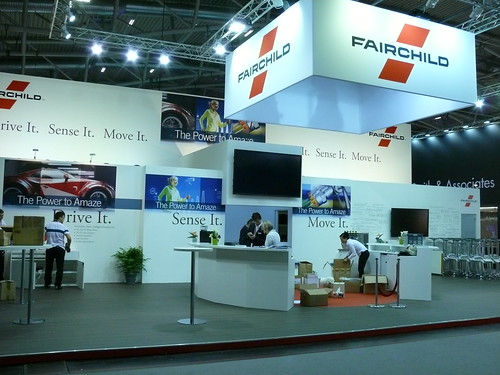Complaint resolution
My mind cast back to one of the first modules I studied at college. There was a lecture on the role of complaint resolution as part of customer services. The idea was that effective complaint resolution engendered trust in a customer service function and was more likely to increase brand loyalty and recommendation to other people. In reality Ehrensberg-Bass Institute have explored this area in more depth and found that customer penetration is more important than customer loyalty.
I suspect that the benefit in complaint resolution is more around a premium brand positioning rather than the business benefits of loyalty. This is an interesting frame to consider AirHelp’s global airline ranking. Unlike SkyTrax that focuses on experience, AirHelp weighs its ranking heavily on complaint resolution.
British Airways came 82nd out of 83 airlines assessed, which won’t be a surprise to anyone who has flown with them over the past four years.
Many airlines that would have a high SkyTrax service ranking, didn’t perform as well on complaint resolution.
So there wasn’t a clear correlation between experience resolving lots of customer complaints or a highly evolved service offering.
Beauty
Asia’s beauty triangle and why L’Oréal wants to harness it to ‘uncover the future’ | Cosmectics Design Asia – focus on the ‘beauty triangle of China, Japan and Korea for innovation
Consumer behaviour
The Strength of Weak Ties by Mark S. Granovetter – written back in 1973 and still just as valid.
Energy
Emerging car brands scrutinised by Bloomberg and Grant Thornton | Manufacturer – “Chinese brands are dominating the scene with good products, big screens, and impressive interfaces.” However, the challenge arises when considering pricing, as Chinese EVs like the XPeng’s G9 SUV was 72,000 euros competing against the likes of BMW and Mercedes. So they’re going to find it very, difficult and it’s going to come down to price.” Dean pointed out MG’s success in the UK market was achieved by hitting exactly the right sweet spot in terms of pricing. The MG ZS, the second-best-selling battery electric vehicle in the UK, is priced at an average of £31,000, making it compelling in terms of competitive pricing especially in a country where consumers are not fiercely loyal to specific brands. – interesting reading. The way for Chinese vendors to win would be to have Chinese incentivised lease financing, particularly in a time of higher interest rates a la Huawei in the telecoms markets.
Ethics
Bee Respect: Guerlain – interesting full-featured sustainability policy
Staff rebel at consultancy behind VW review of Xinjiang rights abuse | FT – Volkswagen using sketchy data practices, haven’t we heard this somewhere before?
Finance
China Turns the Tables on Wall Street – WSJ – I am not surprised, just wait until they see how Chinese overseas debt is handled let alone 3rd world sovereign debt
FMCG
China overtakes US as branded coffee shop capital of the world | Starbucks | The Guardian
Health
American men are dying younger. – by Richard V Reeves – I just don’t think this can be addressed in the current climate of othering and privilege. It would be like trying to hold a meaningful discussion on immigration a few decades ago.
How Taiwan’s disease detectives are keeping tabs on China | Telegraph Online
Hong Kong
Xi in Nanning; Shanghai and Beijing real estate tweaks; More Hong Kong bounties; Sim Love | Sinocism – the Hong Kong puts bounty on the head of US citizen who has criticised the Hong Kong government in the US. They are all ethic Chinese. So China and the Hong Kong government think that ethnic Chinese wherever they are should be loyal to their respective administrations – in essence their face is their passport. Not even Israel does something similar with the the world’s Jewish community, or Ireland with our diaspora.
Innovation
Quantum Breakthrough: Caltech Scientists Unveil New Way To Erase Quantum Computer Errors – Researchers from Caltech have developed a quantum eraser to correct “erasure” errors in quantum computing systems. This technique, which involves manipulating alkaline-earth neutral atoms in laser light “tweezers,” allows for the detection and correction of errors through fluorescence. The innovation leads to a tenfold improvement in entanglement rates in Rydberg neutral atom systems, representing a crucial step forward in making quantum computers more reliable and scalable.
Luxury
LVMH takes VivaTech 2023 visitors on a journey in its Dream Box and LVMH Court – LVMH
South Korea’s Coupang to acquire online luxury retailer Farfetch | FT
Marketing
The best of the Jay Chiat Awards: Campaigns that broke habits and reframed perceptions | WARC
Panadol chief marketer: How healthcare is ‘hotting up’, consolidating agency partners and why purpose can go ‘too far | Campaign Asia – rational for not spreading agency spend ‘too thin’ which explains holding company partnerships
Media
What the Epic vs Google case means for content | Ian Betteridge – well worth reading
Online
Meta forced to apologise to Qatari billionaire over crypto scams | FT
TikTok car confessionals are the new YouTube bedroom vlogs | TechCrunch – a combination of factors going on here. Here’s my top hypotheses:
- It is supposed to look ‘off-the-cuff’. I guess the keyword in that sentence is supposed.
- It feels less structured and less staged than the YouTube bedroom trope.
- Its a half-way house between being confident enough to film in public and filming in your bedroom.
- Many cars have smartphone stands, or have owners who have installed them.
- Cars offer some benefits in terms of acoustics. This would be particularly important if the content creator lives in a multiple occupancy household.
WordPress founder Matt Mullenweg asked people to blog as a way of celebrating his 40th birthday.
Retailing
Brands are blaming Temu & Shein for poor business performance | Modern Retail – you probably have a problem with marketing and communicating value if this is the case.
Technology
What leading Apple-in-the-enterprise execs expect in ’24 | Computerworld
GV Co-Leads Funding Round for Photonic Computing Startup Lightmatter – Bloomberg
Web of no web
How Meta’s New Face Camera Heralds a New Age of Surveillance – The New York Times
Wireless
6G: network operators want profitable returns on 5G first | FT






